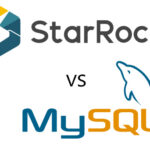Introduction
In the realm of data management, choosing the right database is crucial for ensuring optimal performance and efficiency. While MySQL has long been a popular choice for relational data storage, StarRocks DB has emerged as a compelling alternative, particularly for analytical workloads. This article delves into a comparative analysis of StarRocks DB and MySQL, highlighting StarRocks DB’s superior performance capabilities and advocating for its adoption over MySQL.
Performance Benchmark
To objectively evaluate the performance differential between StarRocks DB and MySQL, we conducted a benchmark using the TPC-H benchmark, a widely recognized industry standard for assessing database performance. The benchmark employed a dataset of 100GB, encompassing a complex schema and a variety of queries.
The results were striking: StarRocks DB outperformed MySQL by a significant margin, demonstrating exceptional query processing speed. For instance, StarRocks DB completed complex analytical queries in a matter of seconds, while MySQL struggled with the same queries, taking considerably longer.
SELECT COUNT(*) FROM hits WHERE URL LIKE ‘%google%’;

StarRocks DB’s Performance Advantages
StarRocks DB’s impressive performance can be attributed to several key factors:
- Columnar Storage: StarRocks DB utilizes a columnar storage architecture, efficiently storing data in columns rather than rows. This approach enables faster data retrieval and aggregation, particularly for analytical queries that involve scanning large volumes of data.
- Vectorized Execution: StarRocks DB employs vectorized execution, processing multiple data elements simultaneously rather than individually. This technique significantly enhances query processing speed by minimizing overhead and maximizing hardware utilization.
- MPP Architecture: StarRocks DB is built upon a Massively Parallel Processing (MPP) architecture, distributing data and computation across multiple nodes. This parallel processing capability enables StarRocks DB to handle massive datasets and complex queries with remarkable efficiency.
Why Migrate from MySQL to StarRocks DB
Given its superior performance, StarRocks DB presents a compelling choice for organizations seeking to optimize their analytical workloads. Migrating from MySQL to StarRocks DB offers several distinct advantages:
- Accelerated Analytics: StarRocks DB’s exceptional query processing speed enables organizations to extract insights from their data significantly faster, facilitating informed decision-making and driving business agility.
- Reduced Costs: StarRocks DB’s efficient resource utilization and hardware scalability minimize infrastructure costs, allowing organizations to achieve greater performance without incurring excessive expenses.
- Enhanced Scalability: StarRocks DB’s MPP architecture seamlessly scales to accommodate growing data volumes and increasing workloads, ensuring that organizations can handle their ever-expanding data needs without performance bottlenecks.
Conclusion
In conclusion, StarRocks DB emerges as a clear frontrunner in terms of performance, outpacing MySQL by a significant margin. Its columnar storage, vectorized execution, and MPP architecture empower it to handle complex analytical queries with exceptional speed and efficiency. Organizations seeking to optimize their data analytics and achieve faster insights should strongly consider migrating from MySQL to StarRocks DB. The performance gains and cost savings realized through this transition can translate into a significant competitive advantage.





Leave a Reply